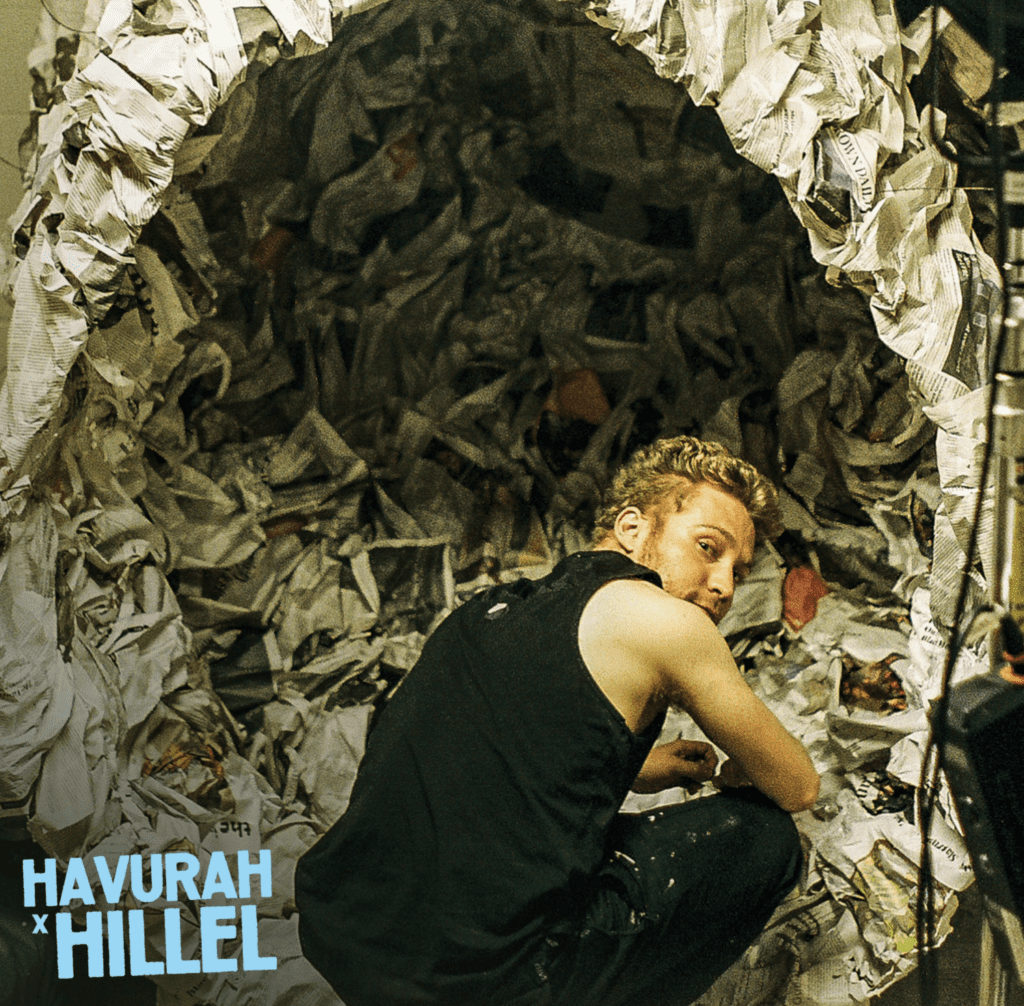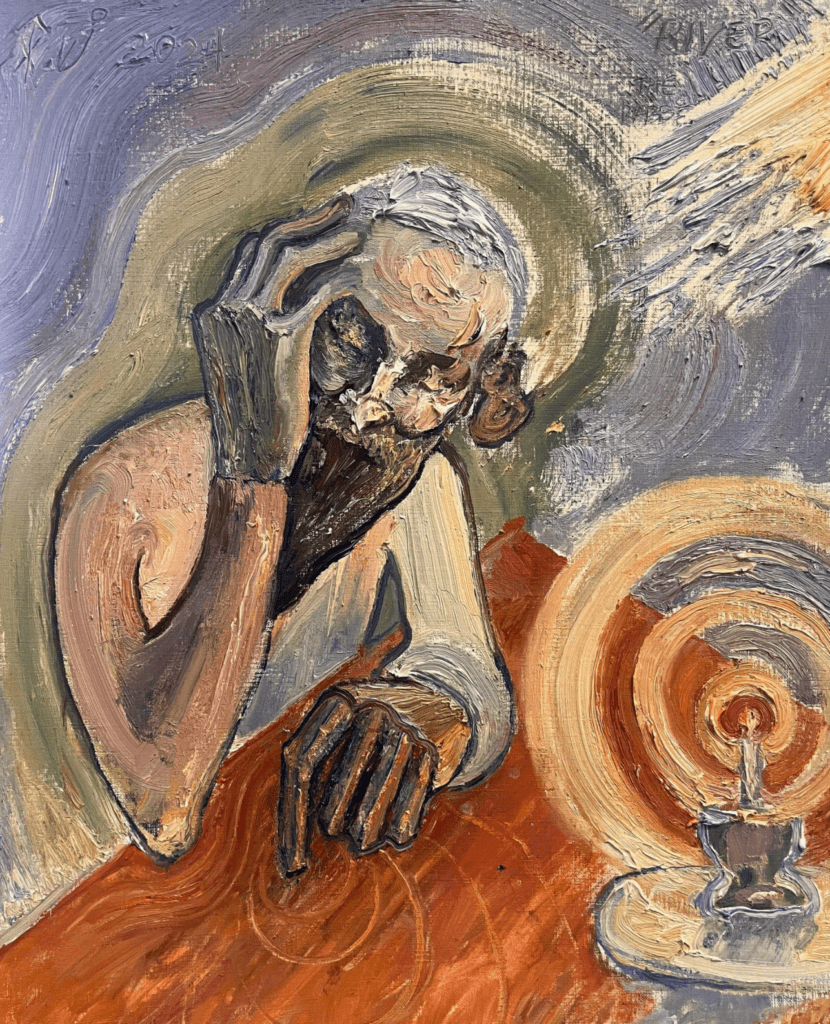Jake Sheykhet Plays with Light and Darkness

Editor’s Note: This article was originally published in Havurah on June 4, 2024.
Jake Sheykhet, a student at Brown University studying History of Art and Architecture, has crafted a unique artistic language deeply rooted in his Soviet Jewish heritage. Hailing from Denver, Colorado, Sheykhet’s creative journey was kindled early on, guided by his parents and Soviet art instructors.
Sheykhet’s art is a vibrant fusion of his cultural and spiritual influences. Inspired by the eminent Soviet film director Andrei Tarkovsky, and the luminous imagery of Eastern Orthodox icons, Sheykhet incorporates physical elements such as gold into his work, imbuing it with a sense of the sacred. The mystical texts of the Kabbalah also play a central role, informing his work with spiritual depth and complexity. This blend of the physical and metaphysical has led to an artistic language that is both profoundly introspective and boldly experimental.
The transition to college marked a significant evolution in Sheykhet’s Jewish identity, which had been primarily cultural. “My freshman year of college, I took a fantastic Kabbalah class,” Jake mentioned, noting the impact it had on his engagement with Jewish texts and community. This deepened connection is evident in his work, where elements of Jewish rituals and spirituality frequently emerge. Jewish themes like Shabbat dinners and spiritual dichotomies of light and darkness pervade his work.

Sheykhet has not been immune to the challenges faced by many Jewish artists today, particularly in light of rising antisemitism on college campuses and beyond. He recounted a troubling incident where his artwork, inspired by Marc Chagall and titled “Blooming Desert,” nearly faced publication rejection due to its perceived support for Israel in the current Israel-Hamas war. This experience highlighted the often fraught environment within the art world and on campus, pushing him to more fervently explore and express his Jewish identity through his art. “The stifling environment has made me engage further with my Judaism, both in and outside of my art,” Sheykhet shared, reflecting on his increased production of Jewish-themed works and participation in Jewish community events.
Describing his artistic style as “experimental, genuine, and ambitious,” Sheykhet embraces a broad range of mediums and scales, from room-sized sculptures to immersive murals. His commitment to experimentation ensures that each project is a fresh take on form and content, allowing him to remain true to his fundamental nature.

Among his proudest achievements is his role in co-curating and co-organizing the past two Judaica exhibitions at Hillel. These events were significant not only for their scale but also for their role in fostering a sense of community and artistic dialogue among Jewish creators at both RISD and Brown. This year’s exhibition was particularly meaningful, serving as a beacon of cultural and artistic solidarity in challenging times.